At the end of this molecules lesson plan, students will be able to describe the basic differences in elements, molecules, and compounds. Also, students will determine the number of molecules in a chemical equation. Each lesson is designed using the 5E method of instruction to ensure maximum comprehension by the students.
The following post will walk you through each of the steps and activities from the molecules lesson plan.
ENGAGEMENT
Objective Introduction
At the beginning of the lesson, the class will do a Think-Pair-Share to discuss the objective.
Class Activity
- Ask the class:
- What is the smallest part of matter?
- What is a molecule?
- What is a compound?
- What are molecules made of?
- How do we know what a molecule is?
- What does the formula for a molecule tell us?
- Is every part of water, water molecules?
Student Activity
- Using the worksheet provided with the purchase of the 5E lesson plan, toothpicks, and four colors of candy, have the students make a model of these molecules:
- NaCl – table salt
- O2 – oxygen
- H20 – water
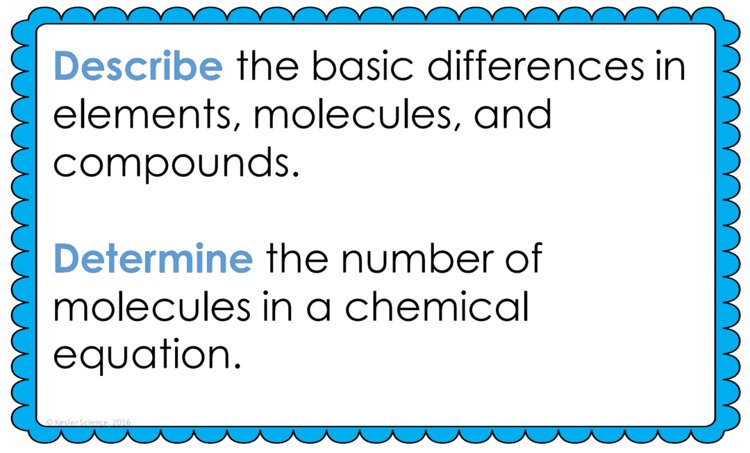
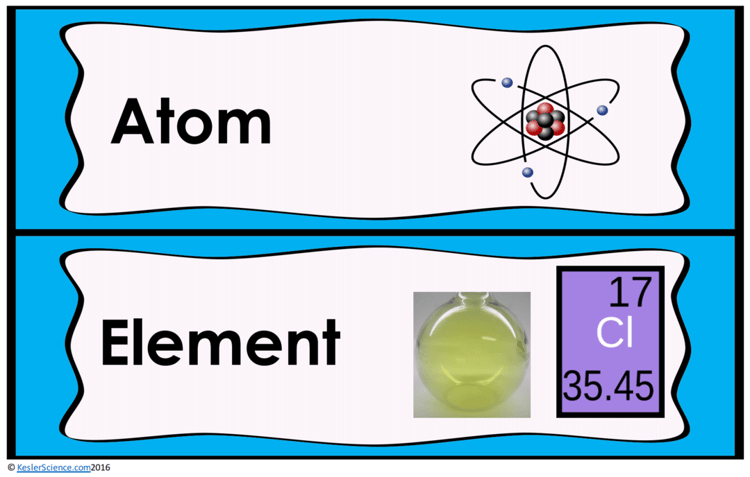
The teacher will help to clear any misconceptions about molecules. A major misconception is students may think that molecules are in substances rather than that they make up substances.
Estimated Class Time for the Engagement: 20-30 minutes
EXPLORATION
This student-centered station lab is set up so students can begin to explore molecules. Four of the stations are considered input stations where students are learning new information about molecules and four of the stations are output stations where students will be demonstrating their mastery of the input stations. Each of the stations is differentiated to challenge students using a different learning style. You can read more about how I set up the station labs here.
EXPLORE IT!
Students will be working in pairs to identify 3 models that represent 3 different chemical formulas. Students will be directed to place cards next to the model they think the card describes. Students will make observations of the models and use that knowledge to create a fourth model to represent the final card.

WATCH IT!
At this station, students will be watching a five-minute video explaining the difference between an atom and a molecule. Students will then answer questions related to the video and record their answers on their lab station sheet. For example: What is the difference between atoms and molecules? How does the instructor compare atoms and molecules to Lego bricks? Describe what a molecule of water looks like.
RESEARCH IT!
The research station will allow students to interact with a simulation to create molecules. Students will create 5 molecules using PhET and then students will answer a few questions about their experience with the simulation.
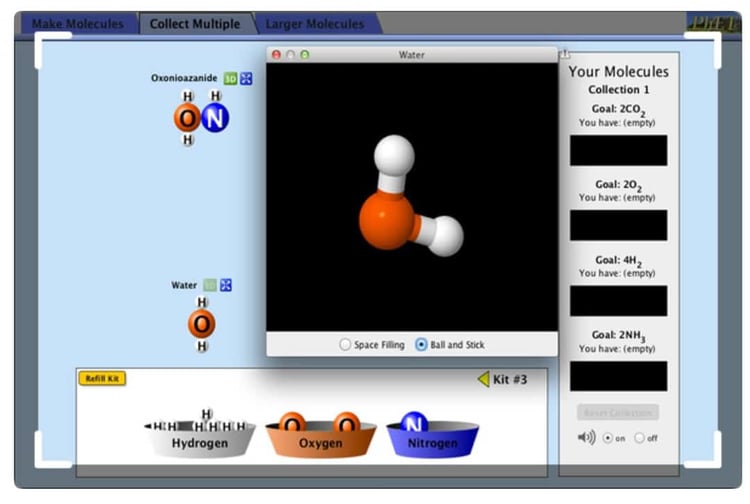
READ IT!
This station will provide students with a one page reading about molecules and compounds. In the reading, students will discover how molecules are made up of two or more atoms. Students will read that molecules are shown by a molecular formula. There are 4 follow-up questions that the students will answer to show reading comprehension of the subject.
ASSESS IT!
The assess it station is where students will go to prove mastery over the concepts they learned in the lab. The questions are set up in a standardized format with multiple choice answers. Some questions include: Which statement is true about the following chemical formula? Which statement is not true? How many molecules are present in the formula shown? What is needed to create a molecule of water?
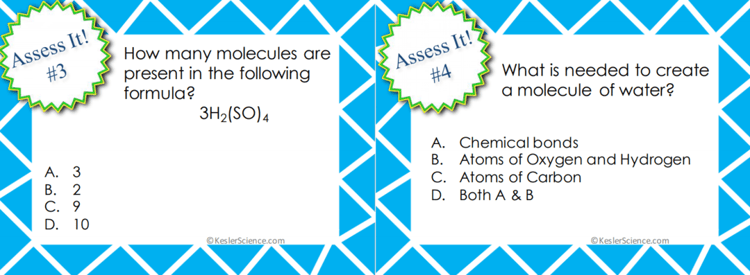
WRITE IT!
Students who can answer open-ended questions about the lab truly understand the concepts that are being taught. At this station, the students will be answering three task cards: What is a molecule? What is the difference between a molecule and a compound? Using the chemical formula provided on a task card, students will describe everything they know about the formula.
ILLUSTRATE IT!
Your visual students will love this station. Students will create images to represent chemical formulas. Students will color code each atom in their images.
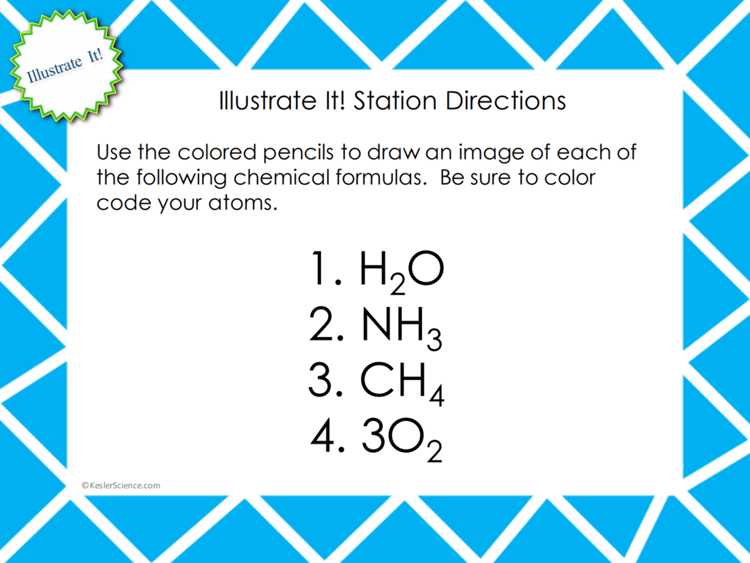
ORGANIZE IT!
The organize it station allows students to match up chemical formulas with the diagrams the illustrate that formula.
Estimated Class Time for the Exploration: 1-2, 45 minute class periods
EXPLANATION
The explanation activities will become much more engaging for the class once they have completed the exploration station lab. During the explanation piece, the teacher will be clearing up any misconceptions about molecules with an interactive PowerPoint, anchor charts, and interactive notebook activities. The molecules lesson includes a PowerPoint with activities scattered throughout to keep the students engaged.
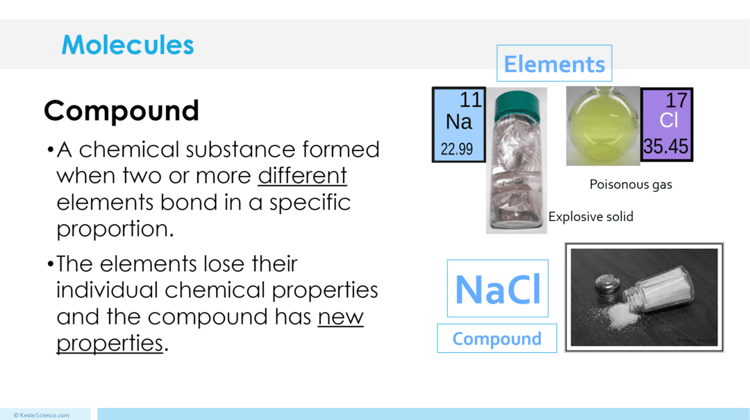
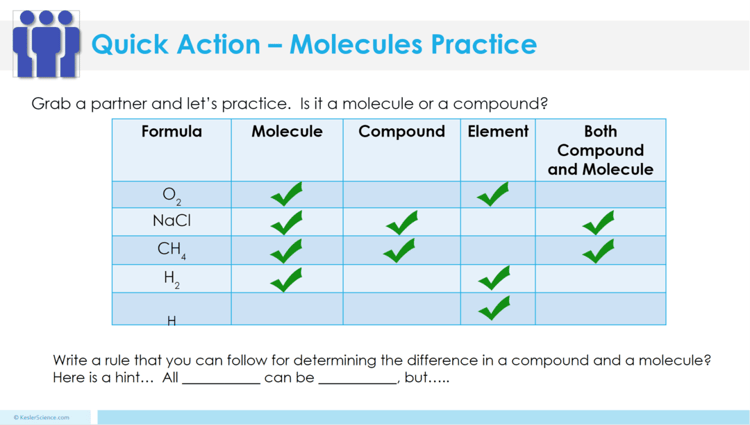
Estimated Class Time for the Exploration: 2-3, 45 minute class periods
ELABORATION
The elaboration section of the 5E method of instruction is intended to give students choice on how they can prove mastery of the concept. When students are given choice the ‘buy-in’ is much greater than when the teacher tells them the project they will have to create. The elaboration project will allow students to create a presentation to teach about molecules.
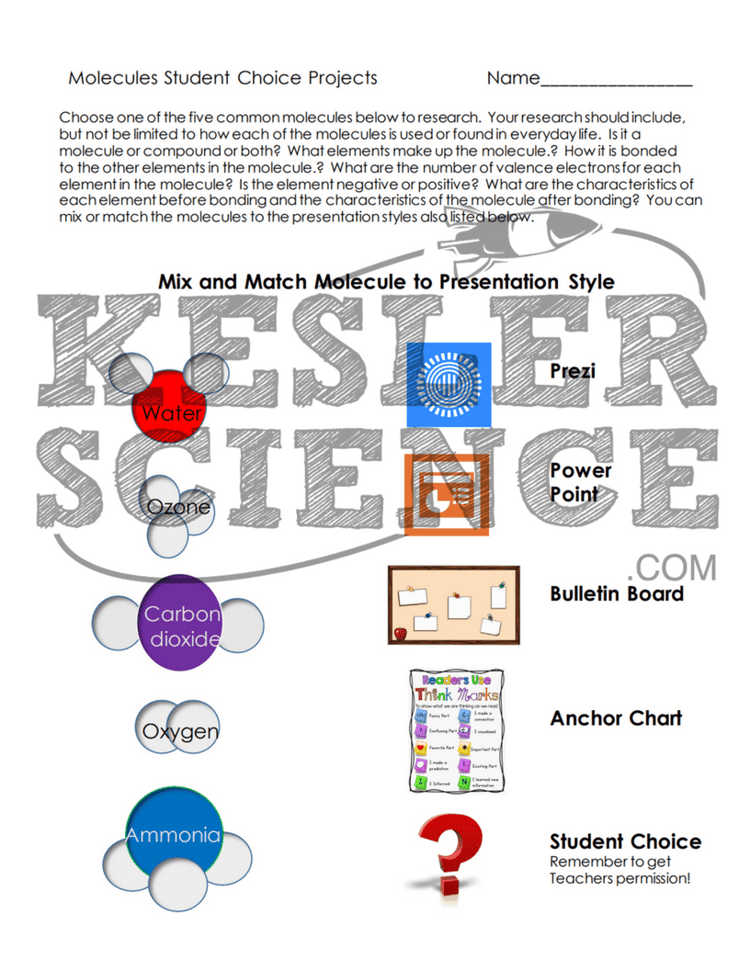
Estimated Class Time for the Elaboration: 2-3, 45 minute class periods (can also be used as an at-home project)
EVALUATION
The final piece of the 5E model is to evaluate student comprehension. Included in every 5E lesson is a homework assignment, assessment, and modified assessment. Research has shown that homework needs to be meaningful and applicable to real-world activities in order to be effective. When possible, I like to give open-ended assessments to truly gauge the student’s comprehension.
Estimated Class Time for the Elaboration: 1, 45 minute class period
DOWNLOAD THE FULL LESSON NOW
The full lesson is available for download from my TpT store. Save yourself a ton of time and grab it now.
Download Over $100 in FREE Resources
For Middle School Science
Simply create a login below and gain immediate access to a selection of our Kesler Science product line worth $100 - for FREE. There's a full version of every product type! You'll also join tens of thousands of middle school science teachers who receive timely tips and strategies straight to their inbox.






